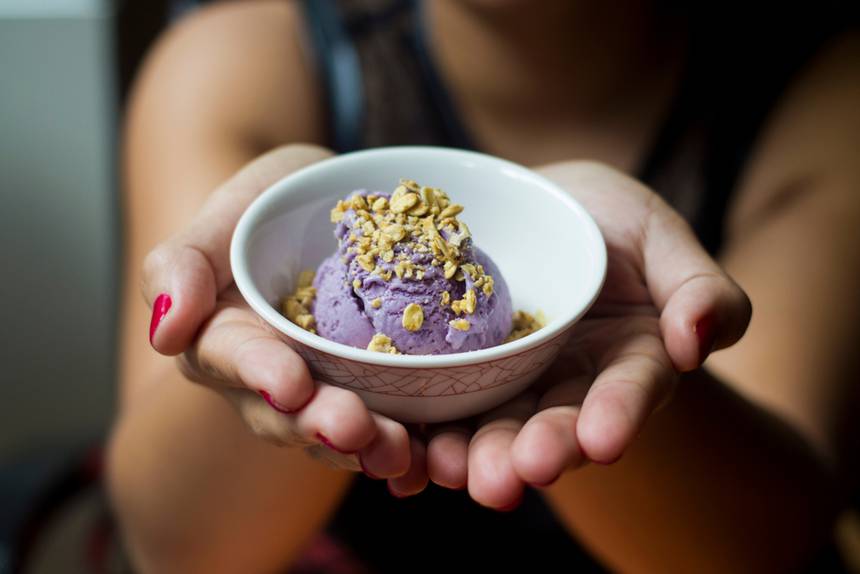From cactus and cow peas to pumpkin flowers and fonio – these 50 delicious foods are healthy, sustainable, and help wildlife too.
Please excuse that hyperbolic title, but I am feeling enthusiastic and the idea behind this collection of foods is ambitious.
It starts with this remarkable fact. According to a new report, 75 percent of the food we eat comes from 12 plant sources and five animal sources. Of those 12 plants sources, 60 percent comes from just three crops – wheat, corn and rice.
We live on a planet of mind-boggling biodiversity, yet for the most part, we eat 17 things. What could possibly go wrong?
The lack of variety in agriculture is bad for our health, bad for nature and a threat to food security, explains the report and subsequent campaign: Future 50 Foods: 50 Foods for Healthier People and a Healthier Planet. The project is a collaboration between the World Wildlife Fund and Knorr foods. And while that might seem like one of the odder partnerships out there, you may have already guessed the connection. The way we eat is also disastrous for wildlife.
With a startling 60 percent drop in wildlife populations since 1970, conservation efforts are no longer enough to save the animals. “We have to address the drivers of habitat loss and species collapse,” says David Edwards from WWF. “And the biggest driver is global farming.”
So there’s habitat destruction – think dwindling orangutan populations thanks to the proliferation of palm oil plantations. But there’s also the inherent risks in investing so much agriculture in so few crops – think Irish potato famine. Not to mention human health benefits of eating a variety of nutrients, and the enormous benefits to soil when not being stripped by growing monocrops.
When you think about it, the answer seems pretty evident: Grow and eat a lot of different kinds of foods. But not just any foods; we should be focusing on adopting foods that are going to be sustainable enough to meet the needs of a growing population while leaving nature intact. Foods that are nutritious and may be naturally pest resistant, that are kind to the soil and don’t destroy critical habitats, that defy drought and produce good yields.
From the report:
“The Future 50 Foods have been selected based on their high nutritional value, relative environmental impact, flavour, accessibility, acceptability and affordability. This set of criteria is modelled after the Food and Agricultural Organization’s (FAO) definition of sustainable diets. Some of the Future 50 Foods have higher yields than similar crops, several are tolerant of challenging weather and environmental conditions, and many contain significant amounts of critical nutrients. Each has a story to tell.”
These are the 50 – the report provides great descriptions and suggestions for each.
1. Laver seaweed
2. Wakame seaweed
3. Adzuki beans
4. Black turtle beans
5. Broad beans (fava beans)
6. Bambara groundnuts/Bambara beans
7. Cowpeas
8. Lentils
9. Marama beans
10. Mung beans
11. Soy beans
12. Nopales
13. Amaranth
14. Buckwheat
15. Finger millet
16. Fonio
17. Khorasan wheat
18. Quinoa
19. Spelt
20. Teff
21. Wild rice
22. Pumpkin flowers
23. Okra
24. Orange tomatoes
25. Beet greens
26. Broccoli rabe
27. Kale
28. Moringa
29. Pak-choi or bok-choy
30. Pumpkin leaves
31. Red cabbage
32. Spinach
33. Water cress
34. Enoki mushrooms
35. Maitake mushrooms
36. Saffron milk cap mushrooms
37. Flax seeds
38. Hemp seeds
39. Sesame seeds
40. Walnuts
41. Black salsify
42. Parsley root
43. White icicle radish
44. Alfalfa sprouts
45. Sprouted kidney beans
46. Sprouted chickpeas
47. Lotus root
48. Ube (purple yam)
49. Yam bean root (jicama)
50. Red Indonesian (Cilembu) sweet potatoes
My household eats many of these, others, not so much. Which is where Knorr steps in. Dorothy Shaver, head of sustainability for the food conglomerate, tells NPR the company wants to be part of the movement.
“This actually gives us a major opportunity to identify some of the flavors that people are missing out on,” she says. “And then we can get them on people’s plates. We can get people to switch out one of their white potatoes that they eat potentially four or five times a week with a purple yam. Or in Indonesia make it an Indonesian sweet potato instead of white rice.”
Shaver tells NPR that doing this across the globe would have an enormous impact on the environment. “She says Knorr will try to mainstream 10 or 15 of these so-called future foods in its dishes. She says its popular cheddar and broccoli rice dish will soon have versions featuring black beans and quinoa instead of rice.”
My inner punk rock teenager feels skeptical when I hear multinational food behemoths talking sustainability – but at the same time, I’m always complaining about Big Food ruining everything. Could this be the point when giant corporations actually start to use their power to make a difference? Only time will tell; but in the meantime, I am looking for some pumpkin flowers and fonio to cook.
I really do recommend looking at the report and reading about all the foods. If nothing else, it is a great reminder to step away from the rice, wheat, and corn and try new things. See the report here: Future 50 Foods: 50 Foods for Healthier People and a Healthier Planet
Via NPR
